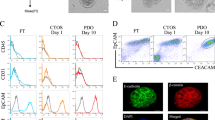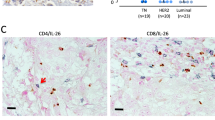Abstract
Rhotekin (RTKN), the gene coding for the Rho effector, RTKN, was shown to be overexpressed in human gastric cancer (GC). In this study, we further showed that RTKN is expressed at a low level in normal cells and is overexpressed in many cancer-derived cell lines. The function of RTKN as an effector protein in Rho GTPase-mediated pathways regulating apoptosis was investigated. By transfection and expression of RTKN in cells that expressed endogenous RTKN at a low basal level, we showed that RTKN overexpression conferred cell resistance to apoptosis induced by serum deprivation or treatment with sodium butyrate, and the increased resistance correlated to the level of RTKN. Conversely, reducing RTKN expression by small interfering RNAs greatly sensitized cells to apoptosis. The RTKN-mediated antiapoptotic effect was blocked by the nuclear factor-κB (NF-κB) inhibitors, curcumin or parthenolide, but not by the phosphatidylinositol 3′-OH-kinase inhibitor, LY294002, or the MAP kinase inhibitor, PD98059. Reporter gene assays and electrophoretic mobility shift assay confirmed that RTKN overexpression led to constitutive activation of NF-κB through the phosphorylation of IκB by IKKβ. By using the RTKN truncation mutants, we showed that RTKN mediated Rho activity eliciting signaling pathway to activate NF-κB, with a concomitant induction of expression of the NF-κB antiapoptotic genes, cIAP-2, BCl-xL, A1, and A20. Consistent with these data, RTKN-expressing cells showed increased chemoresistance to 5-fluorouracil and paclitaxol, and the resistance was greatly attenuated by NF-κB inhibitor. In conclusion, overactivated Rho/RTKN/NF-κB signaling pathway through overexpression of RTKN may play a key role in gastric tumorigenesis by conferring cells resistance to apoptosis, and this signaling pathway may serve as an important target for novel therapeutic approaches to the treatment of human GC.
This is a preview of subscription content, access via your institution
Access options
Subscribe to this journal
Receive 50 print issues and online access
$259.00 per year
only $5.18 per issue
Buy this article
- Purchase on Springer Link
- Instant access to full article PDF
Prices may be subject to local taxes which are calculated during checkout







Similar content being viewed by others
Abbreviations
- GC:
-
gastric cancer
- NF-κB:
-
nuclear factor-κB
- IκB:
-
inhibitory subunit of NF-κB
- IKK:
-
IκBα kinase
- MAPK:
-
mitogen-activated protein kinase
- PI 3-kinase:
-
phosphatidylinositol 3-kinase
- RT–PCR:
-
reverse transcription–polymerase chain reaction
- FACS:
-
fluorescence-activated cell sorting
References
Arlt A, Vorndamm J, Muerkoster S, Yu H, Schmidt WE, Folsch UR and Schafer H . (2002). Cancer Res., 62, 910–916.
Asin S, Taylor JA, Trushin S, Bren G and Paya CV . (1999). J. Virol., 73, 3893–3903.
Bhat-Nakshatri P, Sweeney CJ and Nakshatri H . (2002). Oncogene, 21, 2066–2078.
Bishop AL and Hall A . (2000). Biochem. J., 348, 241–255.
Cammarano MS and Minden A . (2001). J. Biol. Chem., 276, 25876–25882.
Cao Y, Bonizzi G, Seagroves TN, Greten FR, Johnson R, Schmidt EV and Karin M . (2001). Cell, 107, 763–775.
Chen J-Y, Funk WD, Wright WE, Shay JW and Minna JD . (1993). Oncogene, 8, 2159–2166.
Chiao PJ, Na R, Niu J, Sclabas GM, Dong QG and Curley SA . (2002). Cancer, 95, 1696–1705.
Chuang S-E, Yeh P-Y, Lu Y-S, Lai G-M, Liao C-M, Gao M and Cheng A-L . (2002). Biochem. Pharmacol., 63, 1709–1716.
DiDonato JA, Hayakawa M, Rothwarf DM, Zandi E and Karin M . (1997). Nature, 388, 548–554.
Engers R, Zwaka TP, Gohr L, Weber A, Gerharz CD and Gabbert HE . (2000). Int. J. Cancer, 88, 369–376.
Fritz G, Brachetti C, Schmidt M and Kaina B . (2002). Br. J. Cancer, 87, 635–644.
Fritz G, Just I and Kaina B . (1999). Int. J. Cancer, 81, 682–687.
Gildea JJ, Seraj MJ, Oxford G, Harding MA, Hampton GM, Moskaluk CA, Frierson HF, Conaway MR and Theodorescu D . (2002). Cancer Res., 62, 6418–6423.
Ikeda H, Nagashima K, Yanase M, Tomiya T, Arai M, Inoue Y, Tejima K, Nishikawa T, Omata M, Kimura S and Fujiwara K . (2003). Am. J. Physiol. Gastrointest. Liver Physiol. on-line.
Ishizaki T, Fujisawa K, Maekawa M, Watanabe N, Saito Y and Narumiya S . (1997). FEBS Lett., 404, 118–124.
Kamai T, Arai S, Sumi T, Tsujii M, Honda T, Yamanishi T and Yoshida KI . (2003). BJU Int., 89, 449–453.
Kanai M, Konda Y, Nakajima T, Izumi Y, Takeuchi T and Chiba T . (2001). Gastroenterology, 121, 56–67.
Kaneko K, Satoh K, Masamune A, Satoh A and Shimosegawa T . (2002). Pancreas, 24, 251–257.
Karin M, Cao Y, Greten FR and Li ZW . (2002). Nat. Rev. Cancer, 2, 301–310.
Kim JY, Lee S, Hwangbo B, Lee CT, Kim YW, Han SK, Shim YS and Yoo CG . (2000). Biochem. Biophys. Res. Commun., 273, 140–146.
Kleer CG, Van Golen KL, Zhang Y, Wu ZF, Rubin MA and Merajver SD . (2002). Am. J. Pathol., 160, 579–584.
Kourlas PJ, Strout MP, Becknell B, Veronese ML, Croce CM, Theil KS, Krahe R, Ruutu T, Knuutila S, Bloomfield CD and Caligiuri MA . (2000). Proc. Natl. Acad. Sci. USA, 97, 2145–2150.
Kozma R, Ahmed S, Best A and Lim L . (1995). Mol. Cell. Biol., 15, 1942–1952.
Lai J-M, Lu C-Y, Yen-Yang H-F and Chang Z-F . (2001). Biochem. J., 359, 227–233.
Liu C-A, Wang M-J, Chi C-W, Wu B and Chen J-Y . (2004). J. Biomed. Sci., 11, 661–670.
Machesky LM and Insall RH . (1998). Curr. Biol., 8, 1347–1356.
Maeda S, Yoshida H, Ogura K, Mitsuno Y, Hirata Y, Yamaji Y, Akanuma M, Shiratori Y and Omata M . (2000). Gastroenterology, 119, 97–108.
Metzger E, Muller JM, Ferrari S, Buettner R and Schule R . (2003). EMBO J., 22, 270–280.
Mosmann T . (1983). J. Immunol. Methods, 65, 55–63.
Nakshatri H, Bhat-Nakshatri P, Martin DA, Goulet Jr RJ and Sledge Jr GW . (1997). Mol. Cell. Biol., 17, 3629–3639.
Nobes CD and Hall A . (1995). Cell, 81, 53–62.
Olson MF, Paterson HF and Marshall CJ . (1998). Nature, 394, 295–299.
Paterson HF, Self AJ, Garrett MD, Just I, Aktories K and Hall A . (1990). J. Cell. Biol., 113, 1001–1007.
Qiu RG, Chen J, McCormick F and Symons M . (1995). Proc. Natl. Acad. Sci. USA, 92, 11781–11785.
Reid T, Furuyashiki T, Ishizaki T, Watanabe G, Watanabe N, Fujisawa K, Morii N, Madaule P and Narumiya S . (1996). J. Biol. Chem., 271, 13556–13560.
Reynaud C, Fabre S and Jalinot P . (2000). J. Biol. Chem., 275, 33962–33968.
Ridley AJ and Hall A . (1992). Cell, 70, 389–399.
Ridley AJ, Paterson HF, Johnston CL, Diekmann D and Hall A . (1992). Cell, 70, 401–410.
Rohatgi R and al e . (1999). Cell, 97, 221–231.
Romero P and Humphries EH . (1995). J. Virol., 69, 301–307.
Romieu-Mourez R, Landesman-Bollag E, Seldin DC, Traish AM, Mercurio F and Sonenshein GE . (2001). Cancer Res., 61, 3810–3818.
Sahai E and Marshall CJ . (2002). Nat. Cell. Biol., 4, 408–415.
Sanlioglu S, Luleci G and Thomas KW . (2001). Cancer Gene. Ther., 8, 897–905.
Scherer DC, Brockman JA, Chen Z, Maniatis T and Ballard DW . (1995). Proc. Natl. Acad. Sci. USA, 92, 11259–11263.
Schnelzer A, Prechtel D, Knaus U, Dehne K, Gerhard M, Graeff H, Harbeck N, Schmitt M and Lengyel E . (2000). Oncogene, 19, 3013–3020.
Schreiber E, Tobler A, Malipiero U, Schaffner W and Fontana A . (1993). Nucleic Acids Res., 21, 253–258.
Srivastava SK, Wheelock RH, Aaronson SA and Eva A . (1986). Proc. Natl. Acad. Sci. USA, 83, 8868–8872.
Suwa H, Ohshio G, Imamura T, Watanabe G, Arii S, Imamura M, Narumiya S, Hiai H and Fukumoto M . (1998). Br. J. Cancer, 77, 147–155.
Tovar Sepulveda VA, Shen X and Falzon M . (2002). Endocrinology, 143, 596–606.
Tu H and Wigler M . (1999). Mol. Cell. Biol., 19, 602–611.
van Golen KL, Wu ZF, Qiao XT, Bao LW and Merajver SD . (2000). Cancer Res., 60, 5832–5838.
Watanabe N, Kato T, Fujita A, Ishizaki T and Narumiya S . (1999). Nat. Cell. Biol., 1, 136–143.
Weber JD, Hu W, Jefcoat SCJ, Raben DM and Baldassare JJ . (1997). J. Biol. Chem., 272, 32966–32971.
Xia H, Mao Q, Paulson HL and Davidson BL . (2002). Nat. Biotechnol., 20, 1006–1010.
Zhou J, Zhao L-Q, Xiong M-M, Wang X-Q, Yang G-R, Qiu Z-L, Wu M-S and Liu Z-H . (2003). World J. Gastroenterol., 9, 9–15.
Acknowledgements
We thank Dr Z-F Chang (Institute of Biochemistry and Molecular Biology, National Taiwan University, Taiwan) for constructive suggestions. This work is supported in part by NSC91-3112-P-001-024-Y and Chen Shuyi Cancer Foundation.
Author information
Authors and Affiliations
Corresponding author
Additional information
Supplementary Information accompanies the paper on Oncogene website (http://www.nature.com/onc).
Supplementary information
Rights and permissions
About this article
Cite this article
Liu, CA., Wang, MJ., Chi, CW. et al. Rho/Rhotekin-mediated NF-κB activation confers resistance to apoptosis. Oncogene 23, 8731–8742 (2004). https://doi.org/10.1038/sj.onc.1208106
Received:
Revised:
Accepted:
Published:
Issue Date:
DOI: https://doi.org/10.1038/sj.onc.1208106
Keywords
This article is cited by
-
Helicobacter pylori infection induced genome instability and gastric cancer
Genome Instability & Disease (2020)
-
SIVcpz closely related to the ancestral HIV-1 is less or non-pathogenic to humans in a hu-BLT mouse model
Emerging Microbes & Infections (2018)
-
Serglycin in tumor microenvironment promotes non-small cell lung cancer aggressiveness in a CD44-dependent manner
Oncogene (2017)
-
Loss of PTPRM Associates with the Pathogenic Development of Colorectal Adenoma-Carcinoma Sequence
Scientific Reports (2015)
-
Insulin-like growth factor binding protein-3 enhances etoposide-induced cell growth inhibition by suppressing the NF-κB activity in gastric cancer cells
Molecular and Cellular Biochemistry (2015)



